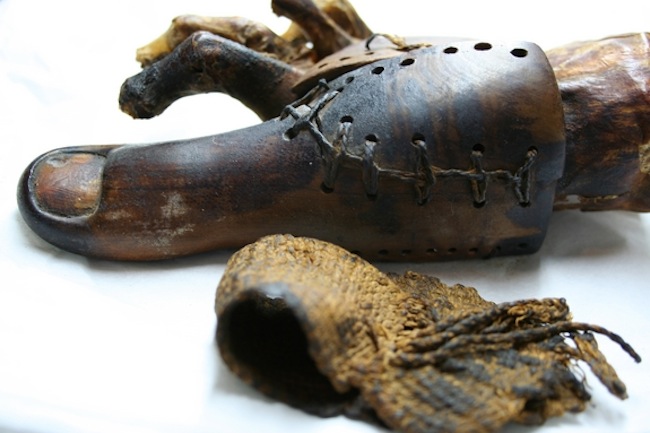Archaeologists Discover Terrifying Medieval Skeleton with a Futuristic Prosthetic Hand
Recent archaeological findings have provided fascinating glimpses into the medical practices of ancient civilizations, revealing advanced prosthetic technology and offering surprising historical insights. Here’s a look at some of the most intriguing discoveries that shed light on how ancient societies addressed limb loss and medical care.
Ancient Prosthetics: A Testament to Early Medical Innovation
One of the most remarkable finds is a 1,500-year-old skeleton discovered in Austria, which includes a prosthetic hand made from wood and leather. This early prosthetic not only showcases the sophisticated craftsmanship of the period but also indicates an advanced understanding of anatomy and patient care.
In Egypt, researchers have unearthed a prosthetic toe made from cartonage, a material combining papyrus and plaster. This ancient toe was designed for comfort, highlighting the attention to mobility and practical needs in ancient Egyptian society. The Cairo toe, believed to be the oldest known practical prosthesis, was used by an Egyptian noblewoman, demonstrating early efforts to aid mobility.
Further insights come from a medieval German knight, whose iron prosthetic hand reveals advancements in prosthetic design and the impact of battlefield injuries on medical innovation. This iron hand represents the merging of combat necessity and medical technology, illustrating resilience during wartime.
In Switzerland, archaeologists have found a bronze hand that stands as the earliest metal representation of a human limb. This discovery underscores the evolution of prosthetic materials and design over time.
Additionally, a unique find in Italy includes a knife prosthesis, showcasing the creativity and ingenuity of limb replacement solutions in different historical contexts.
The Darker Side of Ancient Societies: Shackled Skeletons in Greece
Alongside these advancements in medical technology, other discoveries provide a glimpse into the harsher aspects of ancient life. Shackled skeletons found in Greece reveal the brutal realities of ancient punishments and the treatment of prisoners. These findings offer valuable insights into societal norms and the darker facets of historical justice systems.
Key Insights from Recent Discoveries
- Advancements in Prosthetic Technology: The diverse materials used in prosthetics, from wood and metal to cartonage, reflect the cultural and technological capabilities of different ancient civilizations. These finds indicate a remarkable understanding of anatomy and patient care, far more advanced than previously thought.
- Impact of Battlefield Injuries: Discoveries of prosthetic limbs among soldiers suggest that injuries sustained in battle prompted significant innovations in medical devices, highlighting the resilience and resourcefulness of ancient societies.
- Cultural and Technological Reflections: The varied materials and designs of prosthetics across different cultures underscore the technological advancements and cultural practices of ancient civilizations. These artifacts provide a window into the lives and capabilities of people from millennia ago.
- Historical Narratives and Medical Practices: The successful healing of amputation sites in ancient remains showcases the medical knowledge and care practices that existed long before the advent of modern medicine. This connection between archaeological finds and historical narratives enriches our understanding of ancient lifestyles and medical practices.
- Interdisciplinary Research: These discoveries highlight the importance of combining history, medicine, and anthropology in archaeological research. Such interdisciplinary approaches allow us to piece together a more comprehensive picture of human experiences and advancements through time.
As archaeology continues to uncover these ancient artifacts, each new discovery deepens our understanding of historical medical practices and societal norms, bridging the gap between past and present.





